Red-footed Falcon Falco vespertinus
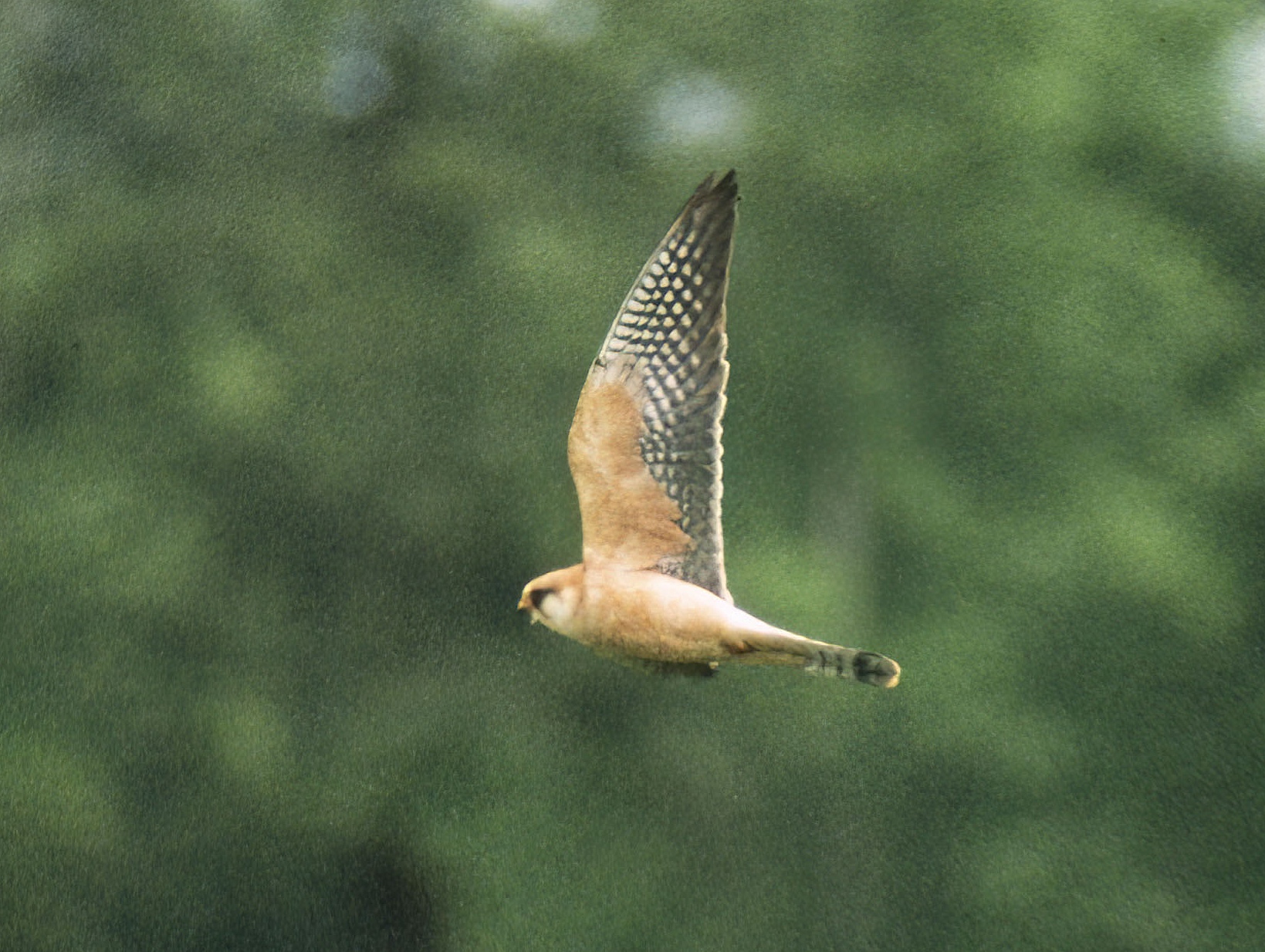
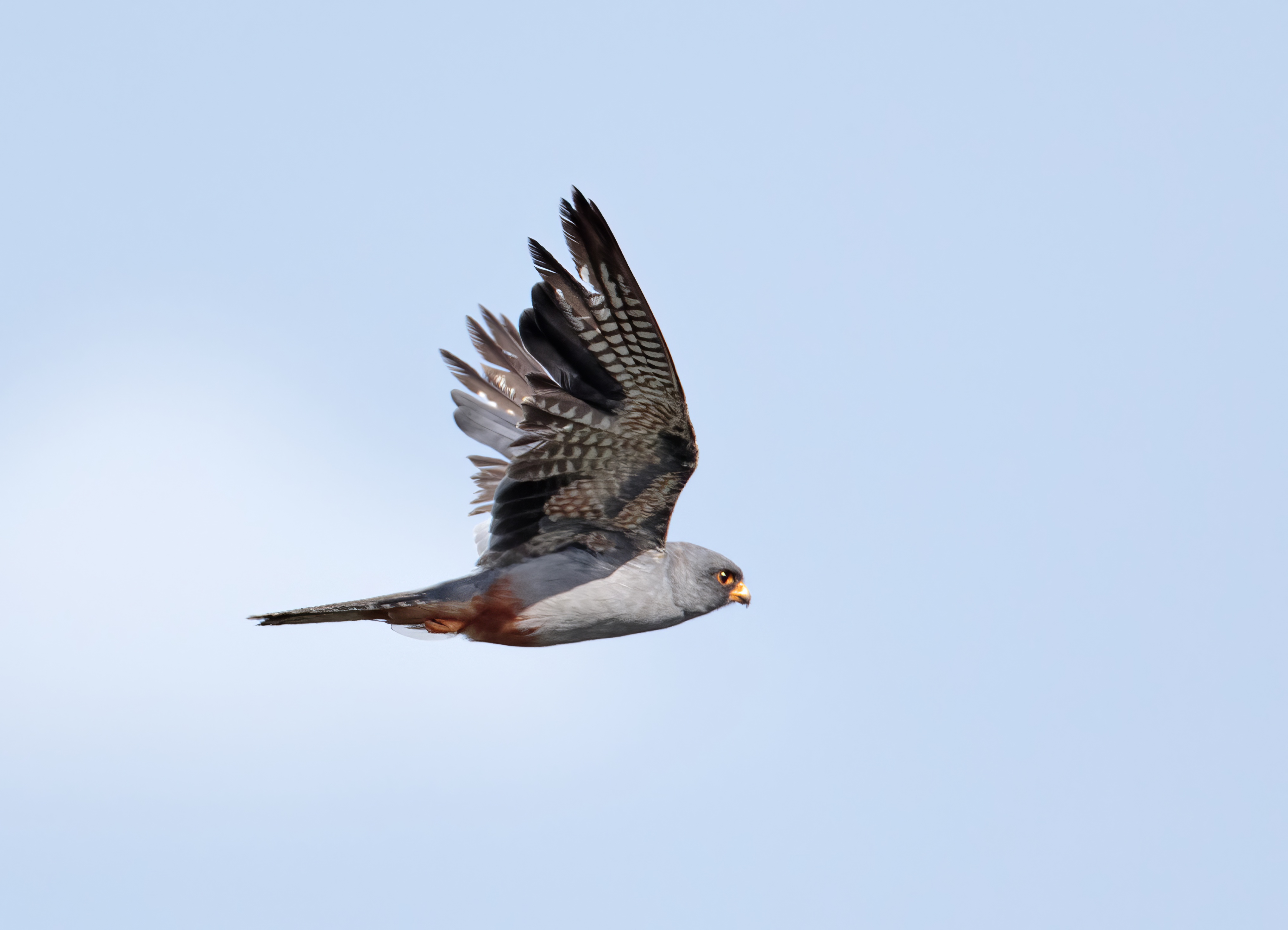
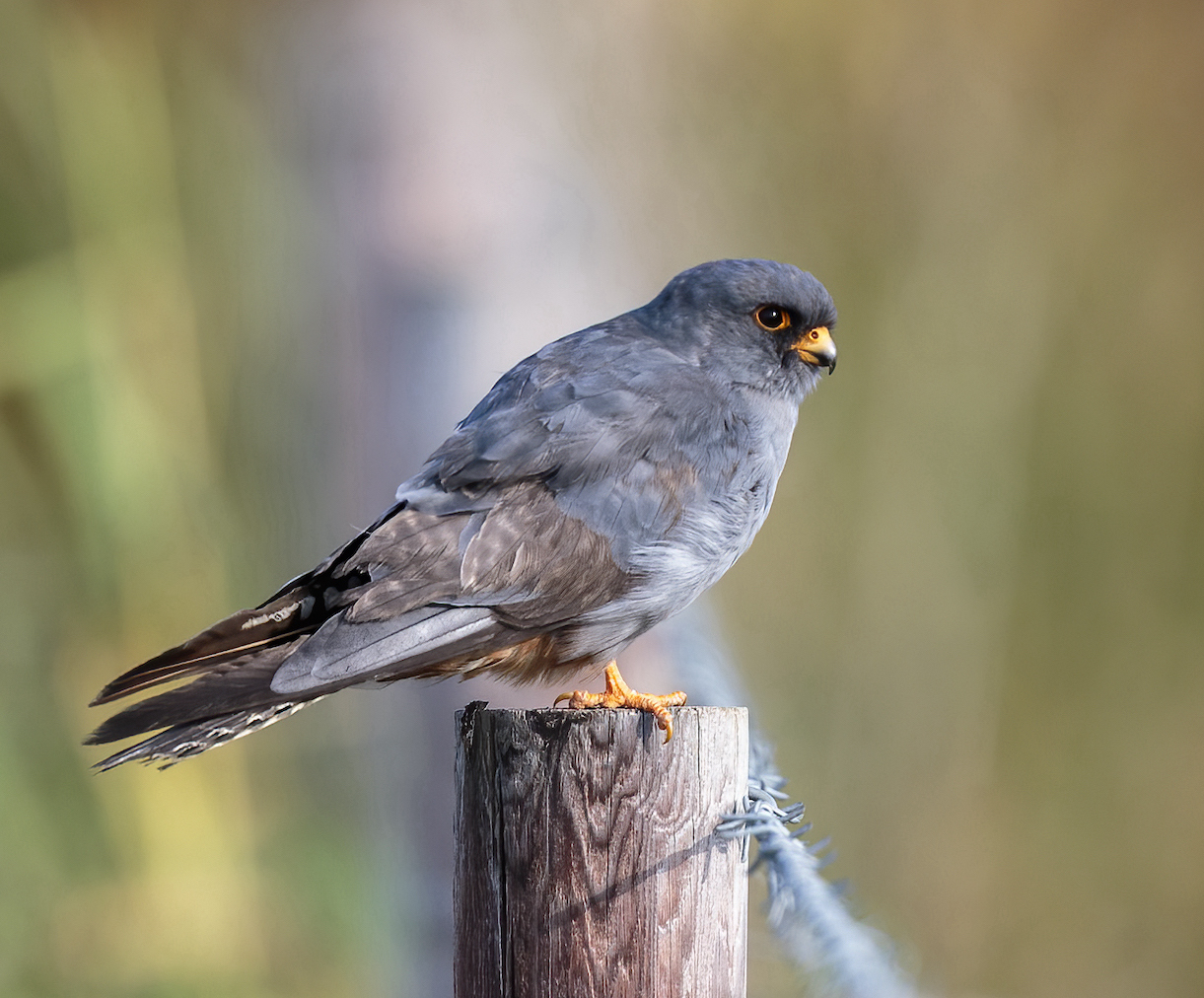
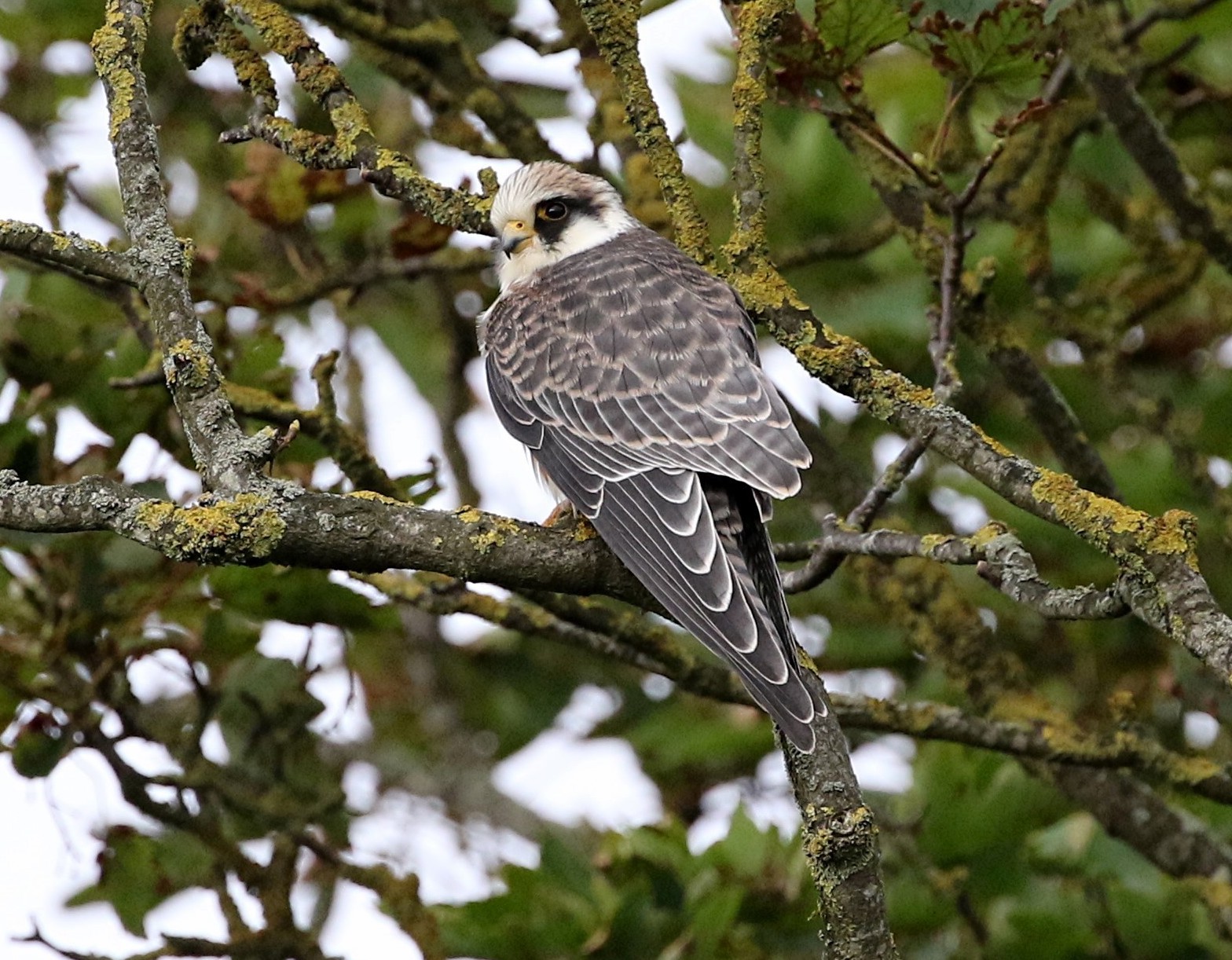
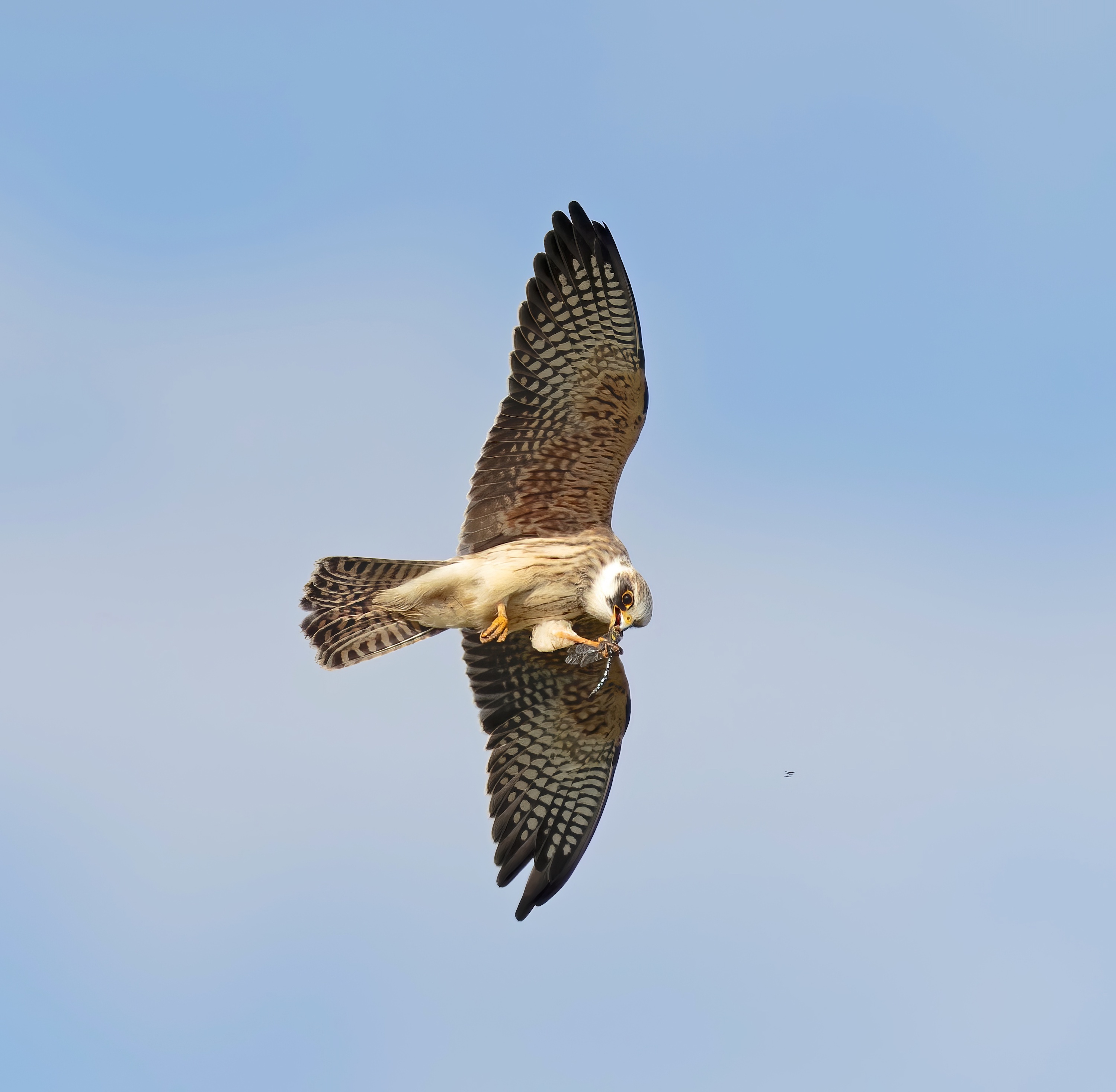
The first authenticated County record of this attractive little falcon was that of a bird that was shot by a keeper at Panton, near Wragby on 15th May 1902. There have been around 37 records since with a peak spring arrival in the second half of May. Fewer have occurred in the autumn with six records in August-September and five in October and another in November. Extreme dates are April 30th 1996 (adult male at South Witham NR) to 2nd November 1979 (immature at Donna Nook) which is also one of the latest ever UK sightings. Most of the sightings have been brief, but some birds have made protracted stays and/or been rather confiding making them particularly popular amongst birders. A typical spring in the UK may produce between 5 and 15 records, but there were 42 in 1973 and 37 in 1989. However, these totals were eclipsed by a major influx in spring 1992 which produced 120 records. This influx was mirrored on the continent with the Netherlands experiencing its largest ever influx April-June when at least 1,111 individuals were reported with a maximum of 160 on May 30th whilst in Denmark 760 were observed between late May and early June. Interestingly there was not a single record in Lincs during spring 1992! Another influx occurred in 2015 in southern Britain and across northern Europe when there were three county records. A first-summer male, which had originally been seen in Staffordshire from early July to August 8th, was present at Willow Tree Fen from August 12th-September 2nd. This bird was also presumed to be that seen in Northumberland on September 9th-10th and was found shot dead near Whittlesey, Cambridgeshire, on September 19th. This species was removed from the BBRC list of rarities from 2006.
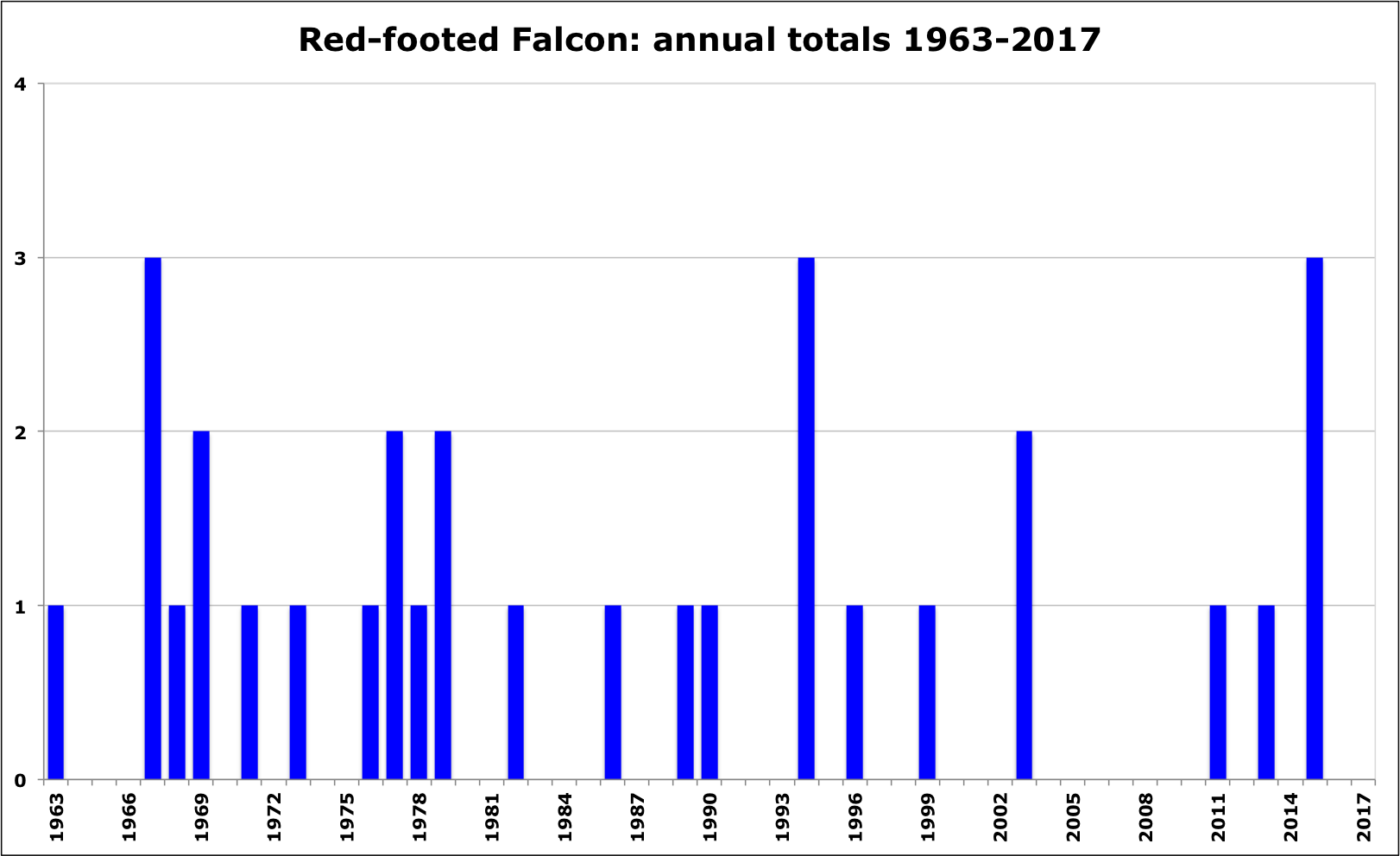
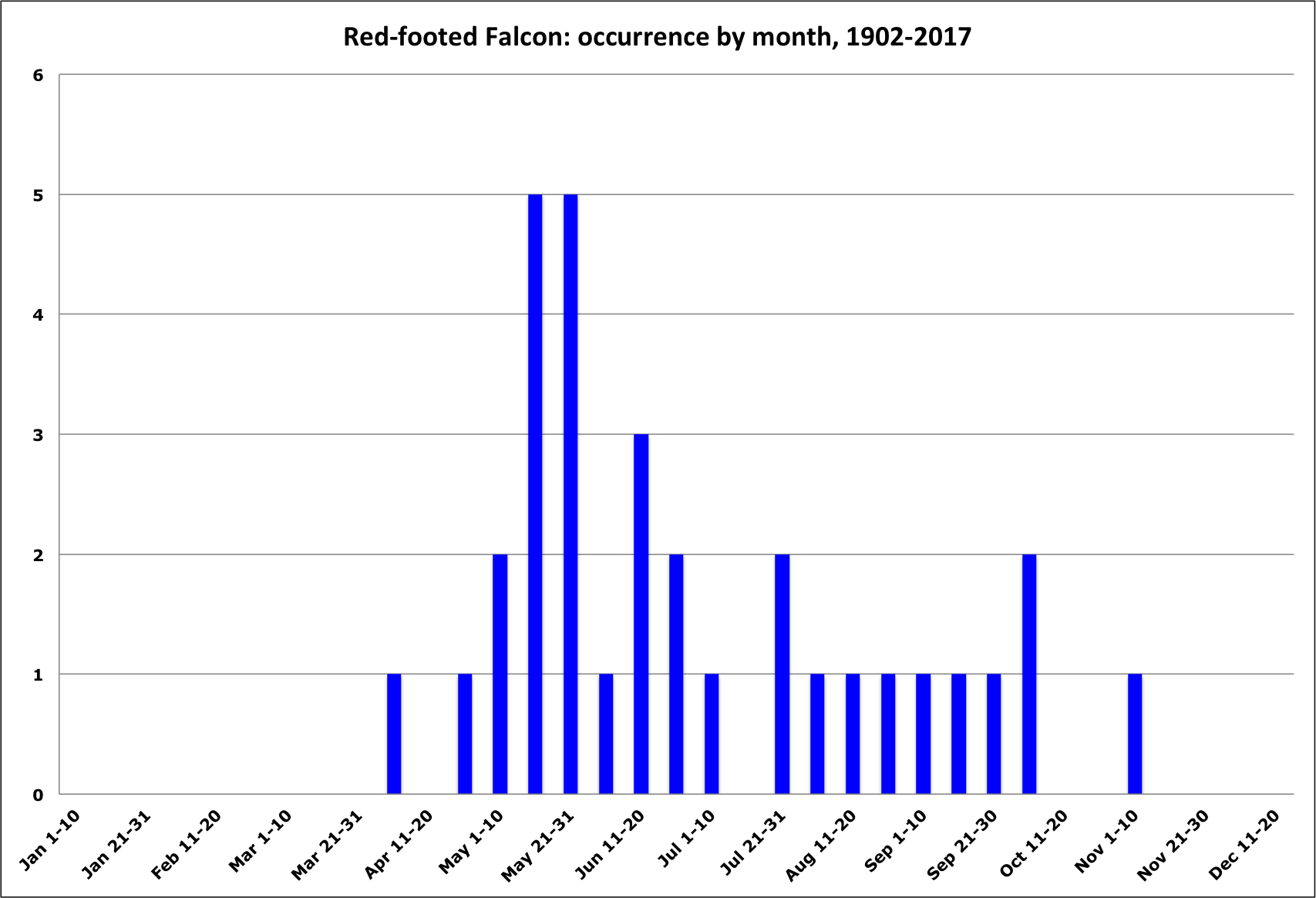
| Site | First date | Last date | Count | Notes |
| Panton | 15/05/1902 | - | 1 | Shot by a keeper. |
| Grantham | 08/09/1963 | - | 1 | Male. |
| Cuxwould | 22/05/1967 | - | 1 | Female, found shot. |
| Wainfleet-Gibraltar Point | 19/06/1967 | - | 1 | Immature male. |
| Gibraltar Point NNR | 08/10/1967 | 14/10/1967 | 1 | Female. |
| Donna Nook | 30/06/1968 | - | 1 | Female. |
| Gibraltar Point NNR | 25/07/1969 | 05/08/1969 | 1 | Immature male. |
| Huttoft | 04/10/1969 | - | 1 | Immature. |
| Boston | 15/09/1971 | - | 1 | Male. |
| Keelby | 26/05/1973 | - | 1 | Female. |
| Tetney | 10/05/1976 | - | 1 | Male. |
| Donna Nook | 12/06/1977 | - | 1 | Female. |
| Donna Nook | 02/08/1977 | - | 1 | Male. |
| North Killingholme | 09/05/1978 | - | 1 | Male. |
| Saltfleetby | 24/06/1979 | - | 1 | Male. |
| Donna Nook | 02/11/1979 | - | 1 | Immature. |
| North Killingholme | 16/05/1982 | - | 1 | Female. |
| Goxhill Haven | 19/05/1986 | - | 1 | 2CY male. |
| Gibraltar Point NNR | 30/05/1989 | 04/06/1989 | 1 | 2CY male. |
| Gibraltar Point NNR | 04/06/1990 | 15/06/1990 | 1 | Female. |
| Kirkby Moor | 14/05/1994 | 19/05/1994 | 1 | Probably a 3CY female. |
| Donna Nook | 22/05/1994 | 25/05/1994 | 1 | Adult female |
| North Cotes | 26/05/1994 | - | 1 | Adult female, presumed same as Donna Nook bird |
| South Witham | 30/04/1996 | - | 1 | Male. |
| Gibraltar Point NNR | 11/05/1999 | - | 1 | Male. |
| Baston & Deeping Fen | 12/06/2003 | 02/09/2003 | 1 | 2CY male. |
| Barrow-on-Humber | 25/07/2003 | 26/07/2003 | 1 | 2CY male. |
| Willingham-by-Stow | 06/04/2011 | - | 1 | Female. |
| Saltfleetby-Theddlethorpe NNR | 18/08/2013 | - | 1 | Female. |
| Willowtree Fen | 12/08/2015 | 02/09/2015 | 1 | 2CY male, later found shot near Whittlesey, Cambs. 19/09/2015 |
| Donna Nook | 25/08/2015 | - | 1 | Juvenile |
| Gibraltar Point NNR | 24/09/2015 | 30/09/2015 | 1 | Juvenile. |
| Tetney | 21/05/2017 | - | 1 | Adult male. |
| Gibraltar Point NNR | 25/05/2017 | - | 1 | Adult male. |
| Gibraltar Point NNR | 28/05/2017 | - | 1 | 2CY male. |
| Gibraltar Point NNR | 10/09/2018 | 14/09/2018 | 1 | Juvenile. |
| Gibraltar Point NNR | 30/09/2019 | - | 1 | Juvenile |
| Huttoft | 23/06/2021 | - | 1 | Adult male came in off the sea. |
| Mablethorpe | 05/09/2022 | - | 1 | 1CY bird |
| S-T Dunes NNR | 28/05/2024 | 1 | Immature male at Crook Bank. | |
| Anderby Marsh | 29/05/2024 | 1 | Immature male, presumed to be the S-T Dunes NNR bird. |
Finder’s report: Red-footed Falcon Wainfleet-Gibraltar Point area June 19th, 1967 - an early county record.
by R. B. Wilkinson.
Note: this account by Barrie Wilkinson is based on his original RC submissions and is one of the earliest we have on file. The RC noted that the ten records of this summer visitor to eastern Europe and Asia were the largest total since 1959 and seemed all the more remarkable since they followed a year in which there was none. The geographical pattern was normal, but an unusual number were in July-August instead of April-June. About 55 were recorded in the ten years 1958-67.
Circumstances
At 6.35pm on 19th June I received a telephone call from PC Brian Simpson of Wainfleet, a keen falconer, saying that he had seen a Red-footed Falcon sitting on a telegraph wire along the sea bank about 1.5 miles south of Gibraltar Point. I arranged to meet PC Simpson and an hour later we made our way out by car to the area. We drove along the bottom of the sea bank by the line of the telegraph poles and soon spotted a falcon sitting on the wire. We stopped the car 15-20 yd away and had magnificent views of the bird; it was unmistakably a male Red-Footed Falcon. The time was 8pm and the light was still good with the sun shining.
We watched the falcon for about 20 minutes and all this time it just sat there occasionally turning its head from side to side. When we got out of the car it flew off in the direction of Gibraltar Point, alighting on a power-line halfway there. I was using 9x35 binoculars and I made a brief description as follows.
Description
Size: appeared slightly smaller than Kstrel, though none were in the area to compare it.
